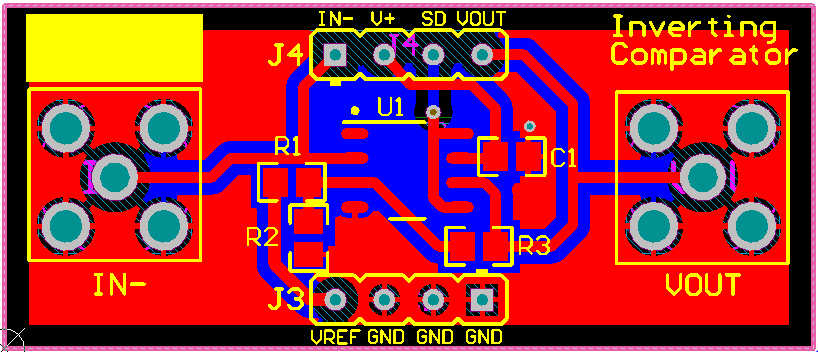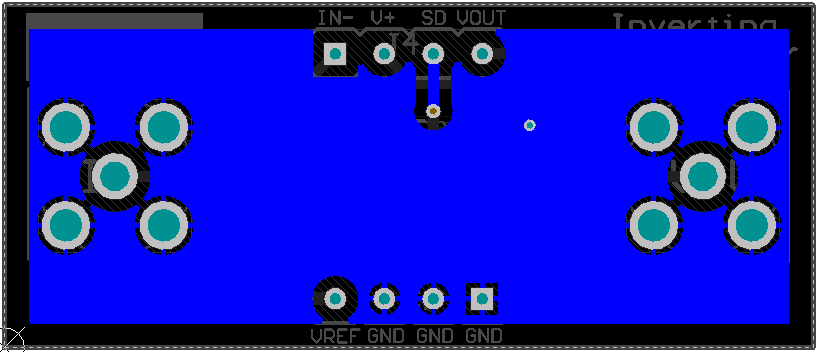SBOU192 July 2017
-
DIYAMP-SC70-EVM
- Trademarks
- 1 Introduction
- 2 Hardware Setup
- 3
Schematic and PCB Layout
- 3.1 Schematic PCB Drawing
- 3.2 Single-Supply, Multiple Feedback Filter
- 3.3 Single-Supply, Sallen-Key Filter
- 3.4 Single-Supply, Non-Inverting Amplifier
- 3.5 Single-Supply, Inverting Amplifier
- 3.6 Difference Amplifier
- 3.7 Dual-Supply, Multiple Feedback Filter
- 3.8 Dual-Supply, Sallen-Key Filter
- 3.9 Inverting Comparator
- 3.10 Non-Inverting Comparator
- 3.11 Riso With Dual Feedback
- 3.12 Dual-Supply, Non-Inverting Amplifier
- 3.13 Dual-Supply, Inverting Amplifier
- 4 Connections
- 5 Bill of Materials and Reference
3.9 Inverting Comparator
Figure 30 shows the schematic for the inverting comparator circuit configuration.
 Figure 30. Inverting Comparator Schematic
Figure 30. Inverting Comparator Schematic It is important to note that this circuit layout is meant for SC70 package op amps or push-pull output type comparators. This configuration uses a voltage divider R1 and R2 to set up the threshold voltage when no hysteresis is added. The comparator will compare the input signal (Vin) to the threshold voltage (Vth).

- R3 is unpopulated
where
The comparator input signal is applied to the inverting input, so the output will have an inverted polarity. When Vin > Vth, the output will drive to the negative supply (GND or logic low). When Vin < Vth, the output will drive to the positive supply (V+ or logic high).
R3 can be populated to implement hysteresis which uses two different threshold voltages to avoid the multiple transitions. The input signal must exceed the upper threshold (VH) to transition low or below the lower threshold (VL) to transition high. Equation 19 and Equation 20 will calculate the value of R2 and R3 for the two desired thresholds.


The PCB layout of the top layer of the inverting comparator circuit configuration is displayed in Figure 31.
 Figure 31. Inverting Comparator Top Layer
Figure 31. Inverting Comparator Top Layer The PCB layout of the bottom layer of the inverting comparator circuit configuration is displayed in Figure 32.
 Figure 32. Inverting Comparator Bottom Layer
Figure 32. Inverting Comparator Bottom Layer